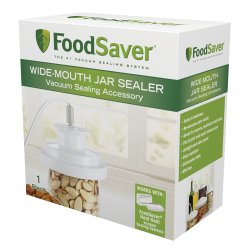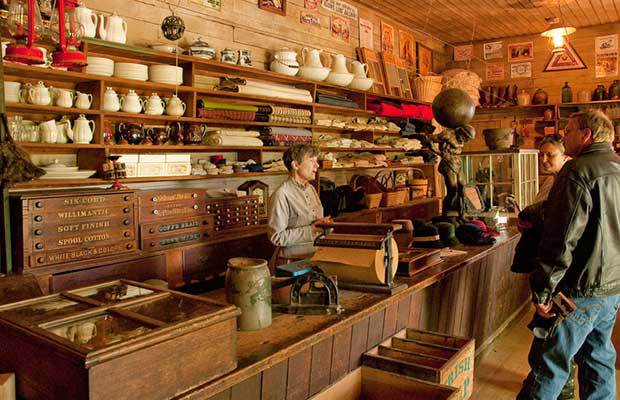OK, so you have decided that you want to take steps to protect your family from unseen events. You may not know what events to plan for or you could have a much defined idea of the threats you see, but regardless you recognize a need. There are people who come to the Prepper Journal after they read something on another prepping blog or they may have been visiting our site for a year. The newer visitors are usually just getting starting in this crazy world of Prepping and if they are anything like I was at the beginning, knowing where to start can be pretty daunting. Prepping isn’t the same for everyone but most people eventually look for a simple guideline to follow so I have pulled together this preppers list of supplies.
How is this list of supplies you need going to be different than any of the 523 million other lists out there? Maybe it won’t be, but I am going to try and go in order of importance so you can follow along at home and let me know what I missed or what should have received priority.
Your list may be completely different than mine, but I believe the items contained in this list of supplies will be common to most people and more importantly will be required if you are going to be as prepared as possible if the manure hits the hydro-electric powered oscillating air current distribution device. This list is not all encompassing either. I am probably not going to have blacksmith supplies or leather working tools although I can see the use in each of those. This list is going to be for the average person to get by if we have a SHTF event, not start a new life in the wild west. Please let me know what additional items you would recommend and I’ll keep this list updated so you can print it out whenever you need to purchase items or want to build your supplies out.
Lastly, this list is primarily for Sheltering in Place and the requirements/resources the average person would be able to lay their hands on. This doesn’t take more extreme climates into consideration but should still provide a base regardless of where you live. For other lists you can check out our Resources page. For something more specific to the Bug Out Bag checklist, click here. Also this list is going to be missing the specifics of the amounts because each family or individual is different. So without further ado, here we go.
Water
- Method of Disinfecting or Filtering Water
- Big Berkey Light or similar gravity fed water filter (capacity 2.25 gallons). It doesn’t get much easier than this. The capacity in only one of these units might not be enough for a family of 4 in the summer though so plan accordingly. You can also buy the filters and make your own water filter much cheaper.
- Paint or coffee filters – to remove sediment prior to filtering. This will keep your filters working much longer if your source is murky. Bandannas or old t-shirts can be used too.
- Backpacking/ Camping Water Filters – MSR Miniworks, Sawyer for individual use or travel. Gravity filters like the Platypus are fastest and have less moving parts to break.
- Bleach – Non-scented or Calcium Hypochlorite is a better long-term option that won’t go bad. For additional instructions on treating water, you can read this article.
- Boiling water over a fire will kill organisms, but will not remove chemicals.
- SODIS Method which you can read about online.
- Water purification tabs – These are last on my list because they do not last long.
- Polar Pure is an iodine based disinfection method that will last far longer than any water tablets.
- Method of carrying water
- Plastic Nalgene Bottles or Stainless Steel water bottle for each individual if you plan on needing to boil water for individual use.
- 5 Gallon water jugs – These are pretty heavy when full. Get the heavy plastic ones not the collapsible bladder type. These will need to hold up to a lot of abuse.
- Yard wagon or wheel barrow to haul the water jugs and reduce trips to your water source if it is remote.
- Methods of obtaining/Storing additional water
- Assuming you don’t have running/well water on your property…. Rain Barrels are best in most climates if you plan ahead.
- Find additional water sources by exploring your neighborhood
- 55 Gallon Storage barrels are easy to set up and forget.
- WaterBOB is great for emergencies with warning you are about to lose water.
Food
- Short Term Food Items – This should be the food you eat every day. Just ensure you have
 30 days’ worth of food storage at all times at the minimum. Build out to one year as your resources allow.
30 days’ worth of food storage at all times at the minimum. Build out to one year as your resources allow. - Long Term Food
- Canned vegetables, fruits and meat (chicken/Tuna/Spam if you can stand it)
- Staples (Food to make food taste better)
- Flour
- Salt – Will last forever if kept dry
- Sugar
- Honey – Will last forever…
- Spices
- Yeast
- Baking Soda
- Baking Powder
- Powdered Milk
- Vinegar
- Ultra-Long Term Food
- Freeze Dried foods would be the last item to stock up on unless you have an abundance of money and zero time. The benefit with these are super long shelf life and virtually zero work so even with the added cost, they are a really smart choice if you have the other bases covered first.
- Misc
- Canning Jars
- Pressure Canner
- Water Bath Canning pot (all of these are reasonably purchased at Walmart or Amazon)
Security
- Personal/Home Defense
- Identify what you will use to protect your family if a bad guy is beating down the door.
 For me I have chosen several firearms and you can read what I consider are the top 5 firearms you need here, the best gun for home defense if you can only afford one and how to find the best handgun for self-defense in other articles on the Prepper Journal.
For me I have chosen several firearms and you can read what I consider are the top 5 firearms you need here, the best gun for home defense if you can only afford one and how to find the best handgun for self-defense in other articles on the Prepper Journal. - Door Security – EZ Armor Door Security Kit
- Sandbags – great for protection from water and bullets.
- Barbwire
- Camouflage clothing – This can have multiple advantages
- Body Armor in either Soft or Hard panels
- Heavy Duty Knife
- Holster for Pistol
- Ultra bright flashlight
- For firearms purchase additional ammo and use our Ammo inventory spreadsheet to help keep track of what you have
- Firearm Safe bolted to the floor
- Identify what you will use to protect your family if a bad guy is beating down the door.
- Extra weapon cleaning supplies
- Financial Security
- Personally I would store most of my extra cash outside of the bank. Your mileage may vary and this is not without risks. This doesn’t prevent a currency devaluation but it does circumvent blank holidays or power outages.
- Precious Metals – Investigate this for yourself, but I find the arguments and historical track records against fiat currency and the current rumblings of Government wanting to take care of your investments for you very compelling. Gold is easier to transport with the high cost to weight, but you might have problems cashing a gold coin for a tank of gas. Silver is where I have chosen to invest in precious metals.
- Pay off bills – move now to ensure you won’t be in debt if the economy collapses.
Shelter
- Clothing
- Make sure you have appropriate clothing to be outdoors. Trendy stops when you have to live outside in the elements. This goes for children too.
- Layers are key in winter, wicking garments in the summer. If you have plenty of camping gear you should be set.
- Sturdy Work Boots
- Heavy Duty Socks – Wool Blends like Merino are my favorite for winter.
- Heavy Duty Gloves
- Repair Materials if needed
- Spare wood – Plywood and 2 x 4’s will handle a lot of different repairs until you can get the right materials.
- Tarps
- Plastic Sheeting – Good for blacking out light or making an infection barrier.
- Duct Tape
- Nails
- Temporary Shelter
- Camping tents and tarps can be used to effectively keep the elements off you if needed.
- Bivvy Bags are great emergency shelters, but not meant for extended use.

- Heat Source
- Kerosene Heater
- Wood Burning Stove
Propane Heater
- Fuel for either in abundance. For Kerosene, you can treat it so that it will store for much longer.
- Fire Extinguishers
Hygiene /First Aid
I have plenty of hygiene items but it is not my major focus/worry. If you can shower every couple of days and wash your hands before eating and after touching anything nasty you should be fine.
- Shampoo
- Soap
- Toothpaste
- Comb/Brush
- Clippers
- Floss
- Razors
- Vitamins
- Fish Antibiotics – In a grid down situation a healthy supply of these could save a life. Also get the Survival Medicine Handbook to know how to use them.
- Hand Sanitizer – Also good for lighting fires
- Sunscreen
- Chap-stick
- Feminine Products
- Alcohol and Hydrogen Peroxide
- Calamine Lotion – Benadryl
- Children’s Fever Reducer
- Neosporin or Fish Antibiotics
- Plenty of bandages
- Latex or Nitrile Gloves (these are cheap so buy two boxes)
- Face-masks (regular and N95)
Cooking
You can read more about cooking when the grid goes down in this article.
- Gas Grill
- Camp Stove
- Rocket Stove like the EcoZoom
- Fire pit
- Solar Oven
- Spare Propane Cylinders
- Disposable lighters/ Matches
- Manual Can Opener – or you can use this method.
- Butane Stove – Spare fuel Canisters
- Cast Iron Cookware – The best option for cooking when the grid goes down.
Lighting/Power
- Rechargeable Batteries X 2 for the important items (radio, lights)
- Battery Charger w/ solar or vehicle adapter for batteries and cell phones
- 1000 Watt Inverter connected to car battery for charging devices/running small appliances
- Spare fuel to run vehicle (min 25 gallons)
- 5 – 5 Gallon gas cans
- PRI – G gas treatment for long-term fuel storage.
- 3000 W Generator
- Tri-fuel generator (gas, propane, natural gas)
- Spare fuel for generator (min 90 gallons)
- 7 – 14 gallon gas cans
- 100 Watt Solar Panel kit
- Deep cycle Batteries
- Siphon pump to acquire additional fuel
- LED Flashlight with spare batteries – 1 per person
- Candles – 15 Hour Emergency candles
- Battery powered lantern for common areas
- Headlamps for each individual – infinitely easier and more practical than flashlights. Allows for hands free tasks.
- Propane lanterns – great outdoor lighting option or use within well-ventilated area.
- Oil lamps – the right kind can provided plenty of light and last longer than batteries, or should according to use.
- Lamp Oil
Tools/Misc.
For tools, these will be basic and not specialized. There are a lot of people who don’t live where there are any trees for example and most will not be building their own log cabin even if they do. Buy the best quality you can afford. You will feel the pain in your wallet one time, but the tool should last long enough to offset that.
- High quality non-GMO seeds.
- Shovels
- Large Pry Bar
- Med-Large Bolt Cutters
- Plastic Zip Ties – Various sizes
- Plastic Bins – 5 Gallon buckets
- Chain Saw – Good for clearing roads or closing roads.
- Heavy Work Gloves – Several Pairs
- Oils and lubricants – Chain oil, motor oil, two cycle oil, WD40
- Wheel Barrow or Yard Wagon
- Clamps
- Full set of wrenches (metric and standard)
- Good Hammer
- Ratchet Straps
- Bungee cords
- Rope
- Rake
- Hoe
- Pruning shears
- Loppers
- Limb Saw
- Hand Saw
- Pick Axe or Mattock
- Post Hole Digger
- Metal Tubs
- Oils and lubricants – Chain oil, motor oil, two cycle oil, WD40
- Full set of Screwdrivers
- Allen wrenches
- Pipe Wrench
- Spare PVC and PVC cement
- Garden Hose
- Nails
- Screws
- Spare Lumber
- Chain
Sanitation
- Quick Lime
- Spare 5 Gallon Bucket with Toilet Lid
- Trash bags
- Hand Sanitizer
- Bleach – Non-scented or Calcium Hypochlorite is a better long-term option that won’t go bad.
- Latex or Nitrile Gloves
- Camping Shower
Communications
You can read more about Ham Radio in this article.
- World Band Radio
- Ham Radio – HT (BaoFeng BF-F8HP 8W High Power)
- Antenna
- Base Station Short Wave Radio
- Spare Batteries for HT and Radio
- Solar Charger
Entertainment
- Games
- Books
- DVD on battery operated player
- Cards
- Frisbee
- ball and bat
by Pat Henry






herbal/essential oil medicine.
herbs
oils
book for herbs, tintures and oils
first aide kit